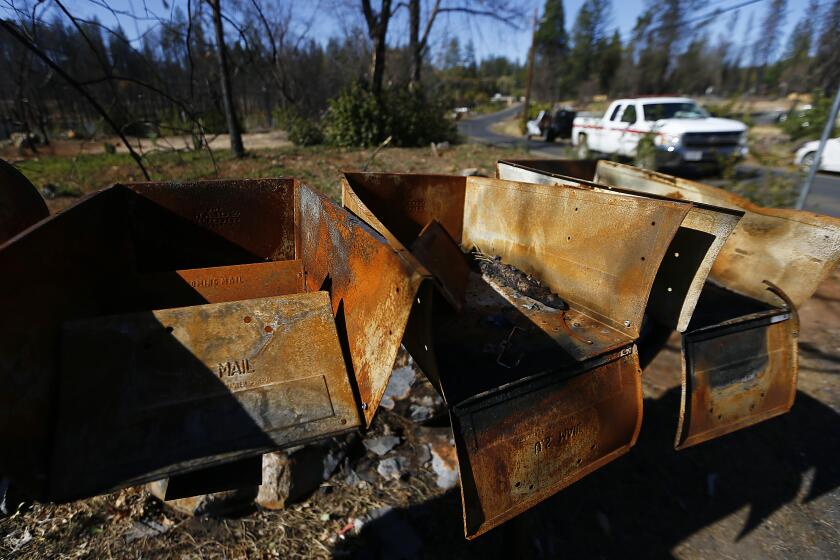Q&A: Why office dress codes keep getting more casual
If you work in an office, what did you wear today?
Chances are your outfit was considerably more casual than it was a few years ago. Office dress codes keep getting more relaxed, spurred in part by the influx of millennials in the workforce.
“Dressing up for work continues to go out of style,” according to a survey released last week by OfficeTeam, an arm of the office-staffing firm Robert Half International Inc.
Half of the senior managers interviewed in the survey said their workers wear less formal clothing than they did five years ago, and 47% said their employees dressed “too casually.” The survey also showed that 32% of managers said their workers showed “too much skin.”
Another sign of the times: Banking giant J.P. Morgan Chase & Co. now lets workers wear business-casual clothing most of the time instead of the once de rigueur suits, the Wall Street Journal reported this week.
Brandi Britton is OfficeTeam’s district president in Los Angeles, and The Times asked her to explain the changing etiquette in office dress. Here’s an edited excerpt:
What’s behind the trend toward more casual work attire?
You’ve got a highly competitive job market right now, and companies are having to be more creative about how they attract people. One way is not just offering good compensation, but other perks, and employees today see dressing less formally as a perk.
Most people you interview will tell you they will wear a suit, but that isn’t their preferential dress code.
So employers are willing to grant their wish?
First, employers are having to be more appealing to the current workforce. Second, you think about how many millennials are in the workforce today — it’s over 60% — and one of the very appealing things to a millennial is a casual dress code.
Third, even in client-facing roles, where in years past, you wore a suit, some of those jobs are tending to also become more casual because the clients themselves you might be visiting are uncomfortable when — quote — the suits show up.
We typically wear suits quite a bit, and when we visit some of our clients and show up in our suits, they think they’re being audited or the FBI is raiding them.
Were older employees pushing for more casual office wear before the millennials arrived?
The millennials are certainly playing a large role in it, but it’s still coming from management, who also tend to appreciate a less formal dress code. In our survey, you’ve got 58% of individuals [who] said they would prefer a business casual dress code or a casual dress code. If you have more than half the workforce wanting a certain dress code, you, as the employer, have to be aware that you may need to be more adaptable to that.
And that includes all employees — millennials, gen-Xers and baby boomers. It’s about being competitive in today’s tight labor market. The demand we see for college graduates continues to get greater and greater each year.
See the most-read stories this hour »
And those employees, or potential employees, are pushing the casual trend?
It’s an employee’s market. People wearing suits and more formal attire seem to return in tougher economic times. More casual dress codes seem to be the trend when economic times are good and it’s an employee-driven market. That’s my personal observation of the last 17 years of staffing.
Why is that?
If there are more jobs than there are people, what are you as an employer doing to attract talent to your company? You do the things employees want: They want money and they want perks such as a more casual dress code. Right now, companies are having to be competitive for talent.
How well do employees understand the difference between business casual and just plain casual?
I don’t think inherently they understand it very well. So companies need to be specific with their dress codes. They need to be more specific about what is unacceptable versus what is acceptable.
You’re going to have individuals who push the envelope. But you’re also going to have — especially with millennials — you have a generation of workers who don’t know. So it’s up to the employers to educate their employees as to what their interpretation is of business casual or casual.
Does a lot of this depend on whether the employee has to meet with clients?
Absolutely. If you’re in a role that’s client-facing, your dress code standards may be higher. With that being said, you still have companies that want to look appealing to prospective employees and also make their clients comfortable with you.
Are there any geographic differences in all this?
Geography plays a big part of it. Business casual in Los Angeles means you’re going to see a gentleman in slacks and buttoned-up shirt. In New York, you’re going to see a gentleman in slacks with a buttoned-up shirt and a sport coat.
We’ve come a long way from the conformity of the “Man in the Gray Flannel Suit,” right?
I know. It’s that encouragement [for workers] to be unique and individualistic.
Do dress codes often reflect the owner or president of the firm?
Yes. The dress code, especially at small and medium-sized businesses, is dictated by the owner. It is a reflection of them — what their employees look like and how they dress.
But I also have a good friend and client who is very corporate in his day-to-day attire, but he allows for a casual work environment for his employees because he believes that will allow them to be more creative in how they work.
For more business news, follow James Peltz on Twitter: @PeltzLATimes
ALSO
Yamashiro restaurant reopens with new operators
Consumer price growth slows as annual core inflation inches up
Here’s why companies leave you in the dark about hacks for months
More to Read
Inside the business of entertainment
The Wide Shot brings you news, analysis and insights on everything from streaming wars to production — and what it all means for the future.
You may occasionally receive promotional content from the Los Angeles Times.










